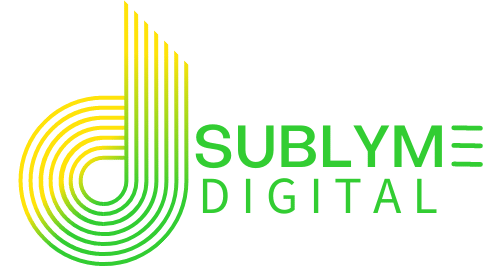Boost Your Local SEO Rankings with Blog Posts
In today’s digital landscape, small businesses must prioritize local SEO to attract nearby customers. While many focus on Google Business Profiles and directory listings, one often-overlooked strategy can make a significant impact: blogging.
Blog posts are more than just content—they’re a powerful tool to improve your local search rankings. By creating location-specific, optimized blog content, small businesses can increase visibility, drive organic traffic, and build trust with their audience.
In this post, we’ll explore how blog posts improve local SEO rankings for small businesses, with actionable tips to help you get started.
Key Takeaways:
- Blog posts help small businesses rank higher in local search results by targeting location-specific keywords.
- Fresh, high-quality content signals relevance to search engines and improves local visibility.
- Blogging supports local link building, enhances user engagement, and boosts authority in local markets.
- Integrating FAQs and schema markup in blogs improves voice and AI search performance.
- Consistent blogging builds trust with your audience, leading to increased traffic and conversions.
Why Blog Posts Matter for Local SEO
1. Targeting Local Keywords
One of the most effective ways blog posts improve local SEO is by targeting location-specific keywords. For example, a bakery in Niagara can write blog posts around keywords like “best cupcakes in Niagara” or “wedding cakes near me.”
By incorporating these keywords naturally into your blog content, you signal to search engines that your business is relevant to local searches. This helps you rank higher in search results and attract customers searching for services in your area.
Actionable Tip: Use tools like Google Keyword Planner or SPYFU to identify high-value local keywords for your industry.
2. Fresh Content Signals Relevance
Search engines prioritize websites that regularly update their content. By publishing blog posts consistently, you show search engines that your website is active and relevant.
Fresh content also keeps your audience engaged, encouraging repeat visits and higher dwell time—both of which positively impact your rankings.
Actionable Tip: Create a content calendar to publish at least two blog posts per month targeting local topics.
3. Supporting Local Link Building
Blog posts provide an opportunity to build local backlinks, which are critical for SEO. When you write high-quality, informative blogs, local websites, businesses, or organizations may link to your content as a resource.
For example, if you write a blog about “Top 5 Local Events in Niagara,” local event organizers might share your post on their websites, boosting your authority.
Actionable Tip: Collaborate with local businesses to create shareable content that benefits both parties.
4. Enhancing User Engagement
Engaging blog posts keep visitors on your website longer, reducing bounce rates and improving user experience metrics. Search engines interpret this as a sign that your content is valuable, boosting your rankings.
Blogs also allow you to address customer pain points, answer questions, and build trust. For example, a blog titled “How to Choose the Best Plumber in Niagara” can position your business as an authority in your field.
Actionable Tip: Use storytelling and visuals to make your blog posts more engaging and memorable.
Blog posts are more than content—they’re a powerful tool to boost your local SEO and connect with nearby customers.
How to Create Blog Posts That Improve Local SEO
1. Focus on Hyperlocal Topics
Hyperlocal content speaks directly to your community. For example, a landscaping company in Toronto could write about “Best Plants for Toronto Gardens.”
This type of content not only improves local SEO but also resonates with your audience, increasing the likelihood of conversions.
2. Optimize Metadata
Metadata, such as your blog post’s title and meta description, plays a crucial role in local SEO. Ensure your metadata includes your target keywords and location.
Example:
- Title: “Top Coffee Shops in Niagara for Remote Work”
- Meta Description: “Discover the best coffee shops in Niagara for remote work. Find cozy spots with great coffee and Wi-Fi.”
3. Use Schema Markup
Adding structured data, such as FAQ schema, helps search engines understand your content better. This increases your chances of appearing in rich snippets, which drives more clicks and improves rankings.
Actionable Tip: Use tools like Google’s Structured Data Markup Helper to add schema to your blog posts.
4. Answer Common Local Questions
FAQs are a great way to drive traffic and improve local SEO. Think about the questions your customers frequently ask and address them in your blog posts.
Example:
- “What’s the best time to visit Niagara Falls?”
- “How do I find a reliable real estate agent in New Jersey?”
We Build Cool

Success Stories
365 Data Centers
Discover how we rapidly rebuilt and optimized a 30-page website for 365 Data Centers, restoring their online presence and managing digital ad campaigns across key regions to drive engagement and growth.
XTECH Football Pads
Discover how we transformed XTECH Football Pads‘ digital presence, boosting their online sales and tripling website traffic through innovative website development and user experience enhancements.
BeEarth Foundation
Discover how we partnered with the BeEarth Foundation to develop a website that aligns with their mission of sustainability and global engagement. Our work has significantly increased their online visibility and engagement, supporting their efforts to promote sustainable development.
We Recycle Solar
Learn how we illuminated digital success for We Recycle Solar by completely redesigning their website to reflect their leadership in the growing solar recycling industry and implementing strategic digital advertising campaigns that enhanced their visibility at key industry events.
Preferred Home Health Care & Nursing Services
Explore how we elevated the digital presence of Preferred Home Health Care & Nursing Services by enhancing their website for better lead generation, building a dedicated site for staff recognition, and optimizing SEO for their location pages.
What Our Clients Say: Elevating Online Success
FAQs:
Answer: Blog posts improve local SEO by targeting location-specific keywords, building backlinks, and enhancing user engagement. They also signal relevance to search engines through fresh content.
Answer: Ideally, small businesses should publish at least 1-2 blog posts per month to maintain fresh content and improve local rankings.
Answer: Yes! By including location-specific keywords and natural language, blog posts can help your business appear in “near me” searches.
Answer: Tools like Google Keyword Planner, SPYFU, and SEMrush are excellent for finding high-value local keywords.
Answer: Yes, linking to your Google Business Profile can improve local SEO by reinforcing your location relevance.
Final Thoughts:
Blog posts are a game-changer for small businesses looking to improve their local SEO rankings. By targeting location-specific keywords, creating engaging content, and optimizing for search engines, you can attract more local customers and build trust in your community.
Don’t let your competitors take the lead in local search. Start blogging today and watch your business grow!
Let's Build Something Sublyme
Ready to boost your local SEO rankings? Let Sublyme Digital help you create SEO-optimized blog posts that drive results. Contact us today to get started!



